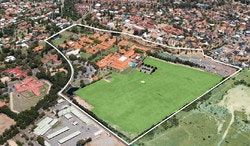Year 9 Japanese
Overview
This course aims to develop and expand a student's previous knowledge of Japanese, giving them the skills to better understand and interact with Japanese materials and communicate with Japanese speakers. Students will begin to master the finer points of hiragana and katakana. They will also be using the unique 'Self Access Teaching Packs' to teach themselves katakana. All the while, students are developing the language and beginning to make it their own.
The cultural component of learning a language is integral to all our classes. Traditional Japanese cooking and traditional Japanese martial arts will also be experienced by the students. Students will be given opportunities to explore situations and events associated with welcoming visitors to Australia.
Topics
The students will learn how to exchange information and develop their cultural understanding in these broad contexts
- The Individual - Favourite Things, Hobbies, Interests and Sports in Japan and Australia, Daily Routine
- Japanese Speaking Communities - Food, Drink and Traditional Meals, Significant Events and Celebrations
- The Changing World - Influence of Technology on Sport, Leisure and Fitness
Students will become competent in Japanese script using a range of medium from calligraphy brushes, word processing and touch technology.
Assessments
The student's achievements are assessed generally at the end of the topic. There is at least one assessment per skill each term. These assessments may vary in time but usually will take up to a lesson (50 minutes) to complete. Topics may last a term or longer and assessments are carried out according to the Outcomes below.
Outcome One: Listening and Responding
Outcome Two: Spoken Interaction
Outcome Three: Viewing, Reading and Responding
Outcome Four: Writing
Cultural Understandings, Systems of the Japanese Language and Language Learning Strategies will be embedded in the course and assessments.
All Year 9 students complete the Assessment of Language Competence in Japanese.
Reporting
Reporting will be based on the following descriptions for each grade:
A Excellent: The student demonstrates achievement that has greatly exceeded the expected standard. Their achievement is well beyond what is expected at this year level.
B Good: The student demonstrates achievement that exceeds the expected standard.
C Satisfactory: The student demonstrates achievement at the expected standard. The student is able to progress to the next level of learning.
D Limited: The student demonstrates achievement below the expected standard. The student demonstrates a quality of learning that is adequate for progression but will still need additional support or assistance to progress.
E Very Low: The student demonstrates achievement below the minimum acceptable for this year level.
Student expectations
Focus on developing skills in listening and speaking, reading, viewing and responding and writing. Employ a variety of ways to learn a language such as:
- Review work covered in class
- Learning new words, expressions and grammatical structures
- Complete reading and writing tasks commenced in class
- Research, develop dictionary skills
- Practise speaking, dialogues, skits
- Revise for tests, using a range of strategies
- Note errors and practice re-writing accurately
- Practise reading and writing characters in Japanese
- Use apps and software to practise vocabulary and script
